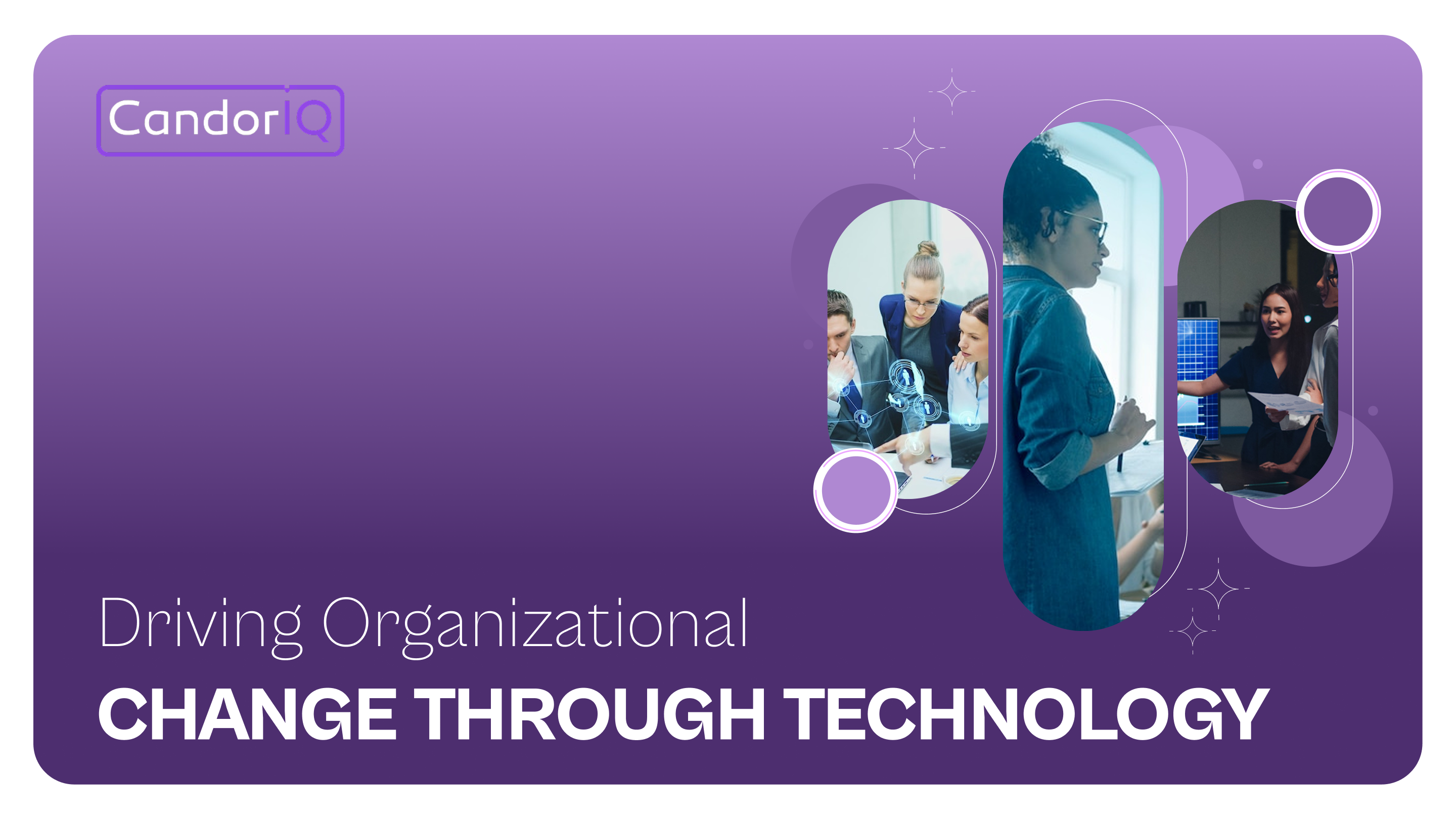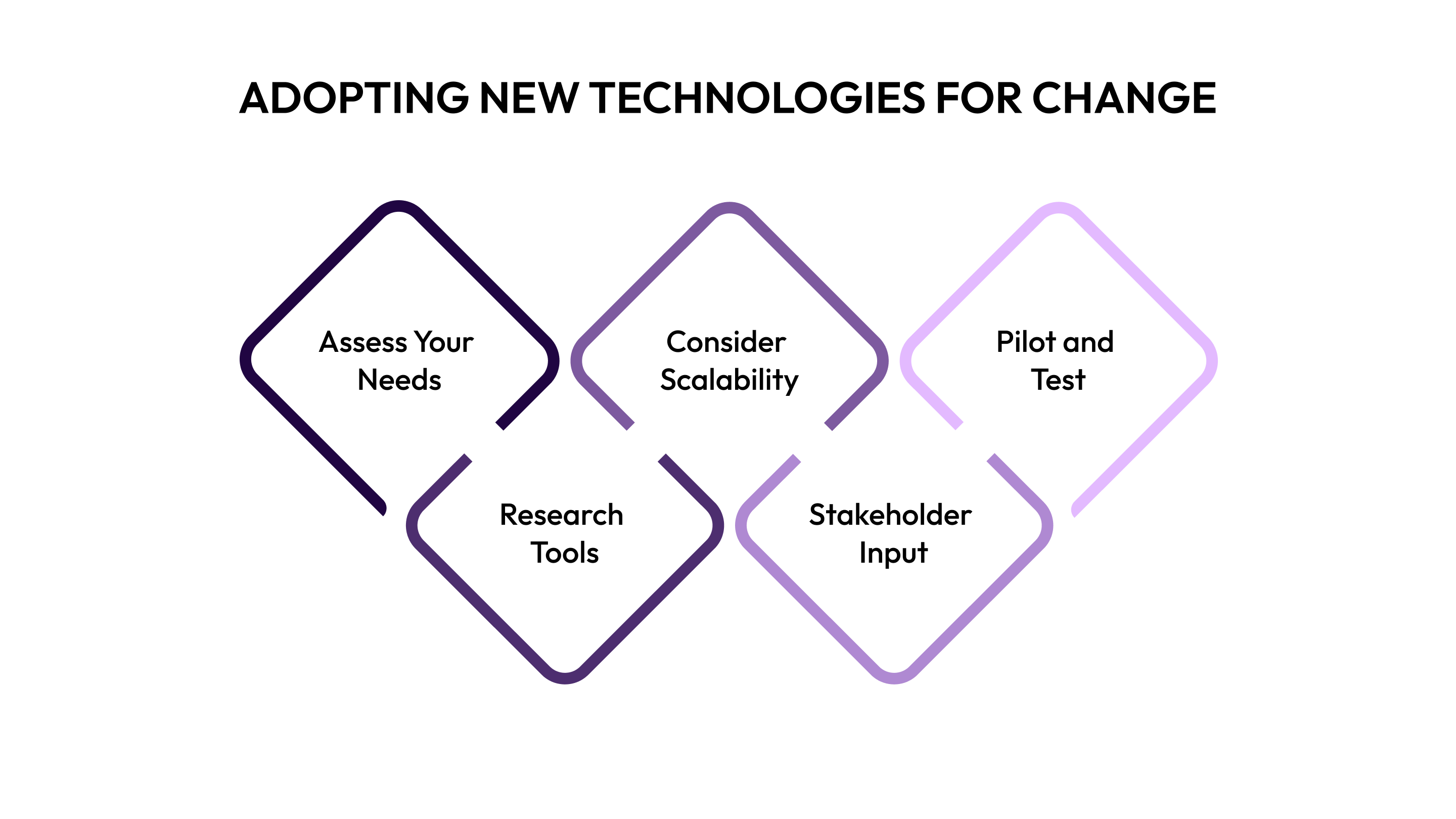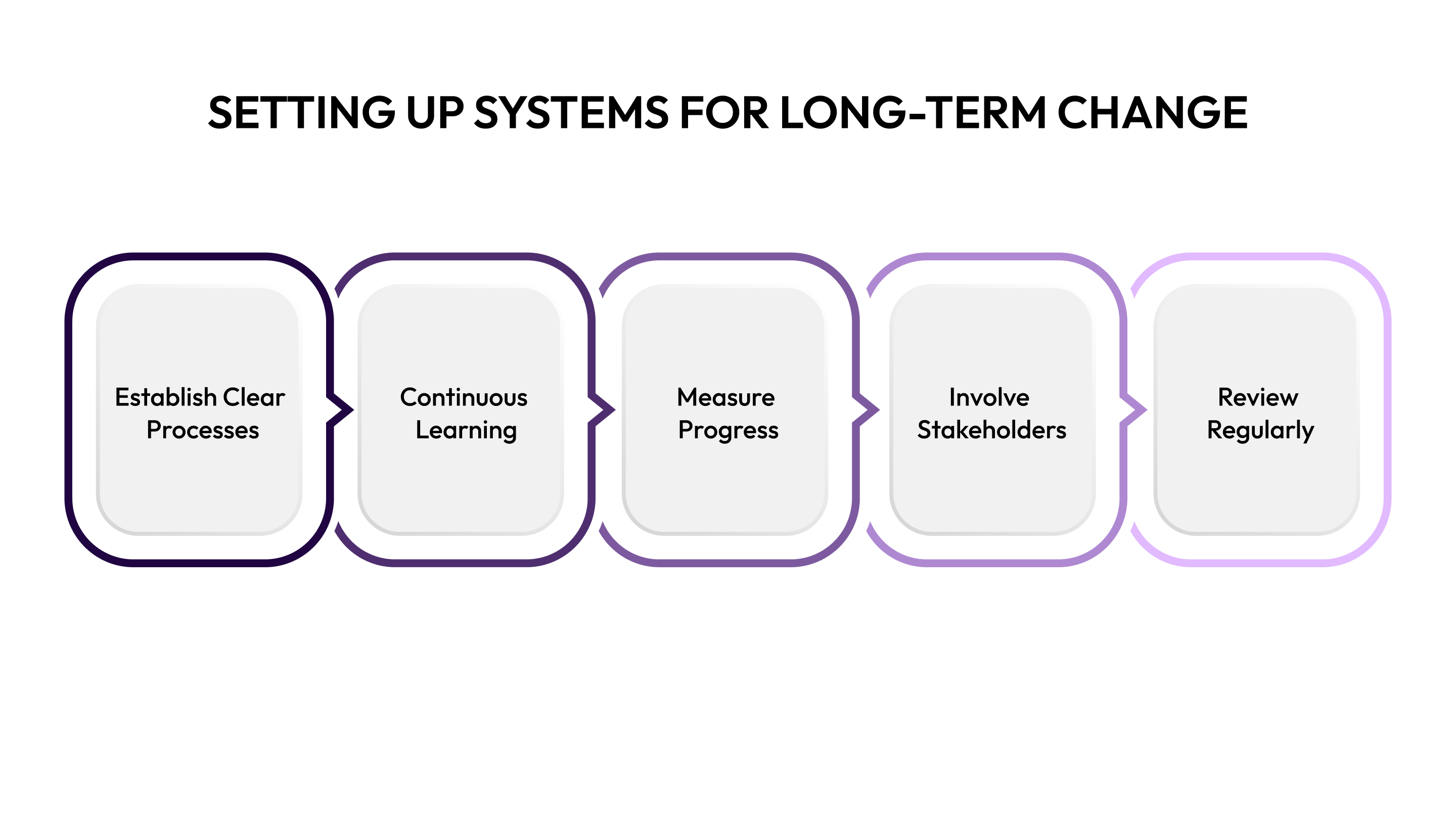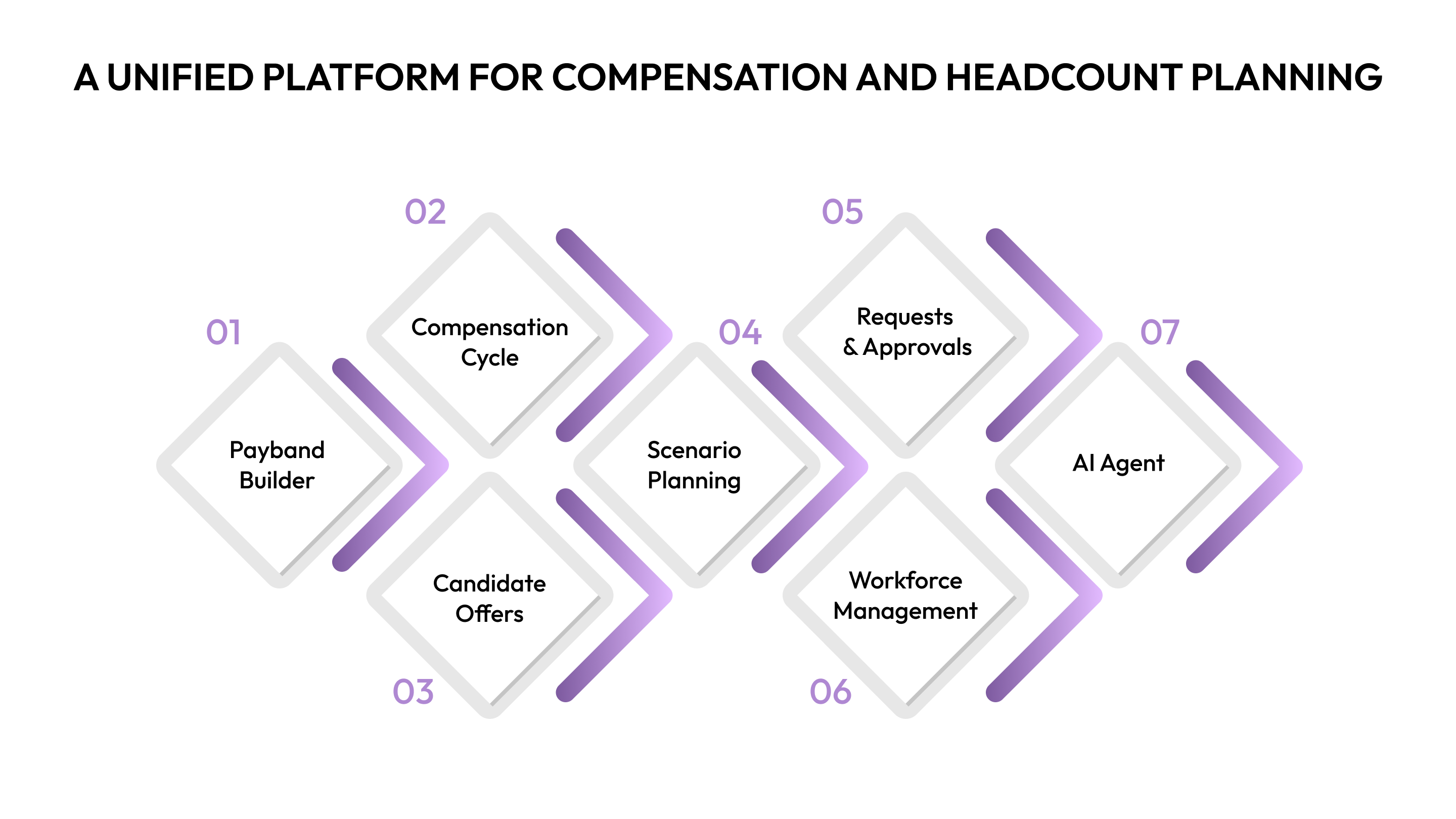Driving Organizational Change Through Technology
Drive organizational change with tech by integrating digital strategies, aligning new trends to goals, and fostering continuous improvement. Start now!

Change is constant, and it can feel challenging, especially for People Ops/HRBPs. Companies, particularly those in fast-growth industries like SaaS, fintech, e-commerce, and professional services, are constantly adapting.
Research shows that organizations have experienced at least five major changes over the last three years. As your team size scales between 50 and 5,000 employees, so does the need for better processes.
75 percent of companies expect more challenges, yet less than half of their changes succeed. Leadership reports that only 34 percent of initiatives are effective. These figures can be discouraging, but they don’t mean change is impossible.
In this blog, we’ll explore why so many change initiatives fail and how technology can make the process smoother for you and your team. The right tools and strategies can help turn change into an opportunity, not just another challenge.
Key Takeaways
- Organizational change management (OCM) helps guide employees through transitions and ensures a smooth adoption of new processes or technologies.
- Clear communication, effective training, and leadership involvement are essential for driving successful technology adoption.
- Identifying organizational needs and involving key stakeholders in technology selection helps ensure the right tools are chosen.
- OCM strategies address resistance to change and build support through consistent feedback and active participation.
- Long-term success requires ongoing support, adaptability, and regular evaluations to maintain effective change management practices.
What Is Organizational Change Management?
Organizational change management (OCM) is how you guide teams through transitions, making sure they adapt effectively. This approach focuses on clear communication and addressing concerns as you implement changes.
For People Ops / HRBPs in fast-growth companies scaling headcount 2–3x annually, this means managing the emotional and practical aspects of change. OCM ensures employees understand and embrace the changes. Effective OCM leads to smoother transitions and keeps teams aligned with organizational goals.
Now that we’ve explored the basics of change management, let’s look at how it plays a key role in adopting new technologies.
How Change Management Supports Technology Adoption

When introducing new technology, change management ensures smooth adoption. Without it, even the best tools can face resistance. Recruiting Managers, People Ops, and HRBPs need to ensure employees understand the technology’s value and can adopt it smoothly.
Here’s how change management helps with technology adoption:
- Clear Communication: Share the reasons for introducing the new technology and how it will make work easier or better for everyone involved.
- Training and Support: Provide the right resources to help employees become comfortable with the change.
- Addressing Resistance: Identify and resolve concerns early through open conversations.
- Leadership Involvement: Ensure leaders, especially CPOs and CFOs, champion the technology to drive alignment between people strategy and financial goals.
- Continuous Feedback: Gather input to make adjustments and improve the process.
With effective change management in place, it’s time to explore how to choose and implement the right technologies.
Identifying and Adopting New Technologies for Organizational Change

Finding the right technology for your company’s needs is essential for driving successful change. This is especially true for mid-sized to growth-stage organizations with lean HR and finance teams, managing a growing workforce.
The right tools can increase productivity, simplify processes, and improve decision-making. HR teams of size 1–10 typically own compensation operations, which means adopting the right technology is crucial for managing that workload effectively.
Here’s how to identify and adopt the right tools:
- Assess Your Needs: Start by evaluating where your organization faces challenges. Identify the areas where technology can make the most impact, especially for distributed teams.
- Research Tools: Look for tools with real-time collaboration capabilities, geo-adjusted compensation support, and strong user reviews.
- Consider Scalability: Choose technology that can grow with your company as it scales its workforce.
- Get Stakeholder Input: Involve HR, finance, and leadership teams in the decision-making process.
- Pilot and Test: Test the technology with a smaller group before rolling it out company-wide.
Once you’ve identified the right tools, it’s critical to set up systems that ensure those technologies remain effective in the long run.
Setting Up Systems for Long-Term Change

Long-term success requires systems that support ongoing change. Implementing change is not just about the initial switch, but making sure the system works over time. This need is particularly relevant for budget-sensitive CFOs requiring workforce cost predictability, who are often concerned about aligning workforce costs with business objectives.
Here’s how to ensure long-term success:
- Establish Clear Processes: Design processes that are easy to follow and adaptable to future changes.
- Encourage Continuous Learning: Keep your team updated with new tools and methodologies to stay ahead of the curve.
- Measure Progress: Regularly assess how the changes are working and adjust where necessary.
- Involve Stakeholders: Keep leadership and key teams involved to maintain focus and relevance.
- Review Regularly: Regularly check in to make sure the changes are still serving their intended purpose.
Maintaining long-term change requires the right tools. Let’s see how CandorIQ can support your goals of compensation and headcount planning.
CandorIQ: A Unified Platform for Compensation and Headcount Planning

CandorIQ is a platform designed for fast-growth USA organizations, especially those with distributed or remote-first teams. It simplifies compensation and headcount planning by consolidating multiple tools into one system. CandorIQ helps HR and finance teams become strategic partners by reducing manual work and eliminating disconnected processes.
CandorIQ provides transparency, structure, and equity, ensuring fair pay across the organization and aligning workforce plans with budgets. This reduces miscommunication risks between HR, Finance, and leadership teams.
Here’s how CandorIQ helps:
- Compensation & Payband Builder: Define pay bands by department and location, ensuring fairness and consistency.
- Compensation Cycle: Automate merit and bonus reviews, track budgets, and set up alerts, reducing manual tasks for HR teams.
- Candidate Offers: Present clear compensation packages, including salary, equity, and bonuses, to improve transparency and retention.
- Headcount Scenario Planning: Model staffing needs and compare different scenarios to align with your budget and business goals.
- Headcount Requests & Approvals: Simplify and speed up the approval process across HR, Finance, and leadership teams.
- Workforce Management: Track open roles, promotions, and attrition, ensuring the data aligns with organizational goals.
- AI Agent: Get automated compensation recommendations generated using real-time market salary benchmarks and internal data analytics, enabling HR and finance to make informed, data-driven decisions.
By consolidating all these functions into one platform, CandorIQ reduces errors and miscommunication, making it easier to stay on track with your growth goals.
Conclusion
Adapting to change is challenging, but it’s also an opportunity to drive growth. By choosing the right tools, like CandorIQ, you can manage compensation and headcount planning more effectively. This allows HR and finance teams to focus on strategic work while ensuring your team remains aligned with business goals.
Ready to see how CandorIQ can help your organization? Book a demo today and discover how our platform can improve compensation and headcount planning for your team.
FAQs
Q: What is Organizational Change Management (OCM)?
A: Organizational Change Management (OCM) helps companies guide employees through changes to new processes, technologies, or strategies. It ensures that employees understand, accept, and adapt to changes, minimizing disruption and boosting adoption.
Q: How can change management impact technology adoption?
A: Without proper change management, employees may resist new tools or fail to use them effectively. Change management ensures clear communication, adequate training, and ongoing support, leading to smoother technology adoption and better results.
Q: Why is it necessary to select scalable technology?
A: Scalable technology can grow alongside your company. As your team size increases, a scalable solution ensures your systems remain effective and flexible, preventing the need for frequent, costly upgrades or replacements.
Q: How does CandorIQ support distributed or remote-first teams?
A: CandorIQ offers real-time collaboration features, making it easy for teams across different time zones to work together. It also supports geo-adjusted compensation, ensuring fair pay regardless of location, which is crucial for remote-first organizations.
Q: Can CandorIQ help align compensation with budget goals?
A: Yes, CandorIQ helps ensure that compensation planning is aligned with your company’s financial goals. The platform provides tools for tracking pay distribution, forecasting headcount costs, and ensuring transparency across HR, Finance, and leadership teams.


